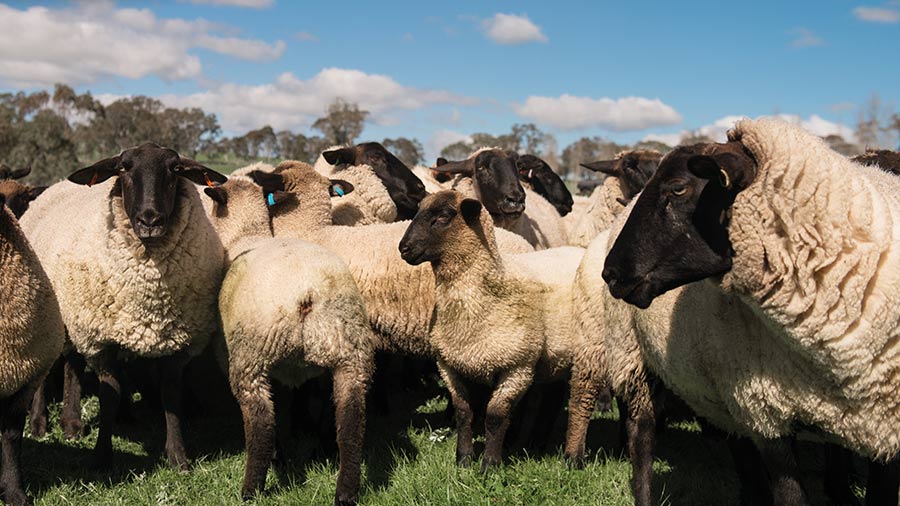Why moving weaning date can improve ewe scanning rate
 © Gillian Vann/Stocksy
© Gillian Vann/Stocksy Sheep farmers should consider adjusting weaning dates to limit the impacts of poor ewe condition to one production year when faced with challenging summers.
This is the message of AHDB knowledge exchange manager Nerys Wright, who says many flocks have had production affected this year by last year’s hot, dry summer.
Lower scanning rates – frequently quoted to be 15-30% down in the 2022-23 winter – have been attributed to low ewe body condition scores (BCS) and will have a major impact on flock output this year.
While the effects of the weather cannot be negated entirely, managing priority groups as well as weaning and lamb finishing dates can help a sheep system deal better with dry conditions, she says.
See also: Nutrition advice to convert higher hill scanning rates
Why condition matters
Ovulation response can be affected by the ewe’s BCS as much as six months before tupping date.
This is when ovarian follicles begin their journey, and their subsequent release during the mating period can affect scanning rates, says Mrs Wright.
This means the ovulation response of flocks that tup on 1 October and lamb in March can be affected as early as April, when ewes are at peak lactation.
A ewe’s metabolisable energy (ME) requirement nearly doubles in early lactation, from 16.3MJ/kg a day (for a 60kg ewe carrying two lambs) to 30.3MJ/kg a day, she says.
If there is insufficient grass/forage or alternative feed available to meet that requirement, a ewe will need to mobilise body fat to produce sufficient milk, lowering her fat cover.
As well as dry conditions, another challenge can be persistently wet grass, which was seen in March. This reduces dry matter intake because ewes fill up on water while the dry matter of the grass reduces.
Key intake period
Ewe milk yield peaks three to four weeks after lambing, so this is a key time to watch grass covers and consider a ewe’s changing BCS, explains Mrs Wright.
“She will produce 40-50% of her milk yield within that time-period. The higher the peak, the higher the overall milk production during the whole lactation period.”
Priority groups
Mrs Wright says ewe lambs and shearlings are priority groups that are still growing, only reaching mature weight at three years old. For this reason, they may need closer scrutiny and supplementation.
Milk production can also be lower in ewes lactating for the first time because of continuing mammary tissue development.
An AHDB study found that shearling ewes lambing for the first time and rearing twin lambs produced lighter lambs at eight weeks post-lambing and at weaning.
Weaning date
Weaning date can be moved forward to control condition loss in ewes. Weaning at 10-12 weeks instead of 14 or 16 weeks means ewes and lambs are not competing for the same grass.
This reduces the risk of ewes losing too much condition and struggling to regain condition prior to mating for the next production year.
Mrs Wright advises considering the following when making weaning decisions:
- Assess ewe and lamb performance eight weeks post-lambing. Aim for lamb weight of 18-20kg and ewe BCS above 2.5
- Use this information (along with grass covers and weather forecasts) to decide when weaning should take place
- What feeding options do you have? Can lambs be weaned onto silage aftermaths, herbal leys or forage crops?
- Are any interventions required? For example, thin ewes or light lambs may need additional feeding. If so, consider managing them as a separate group until weaning.
